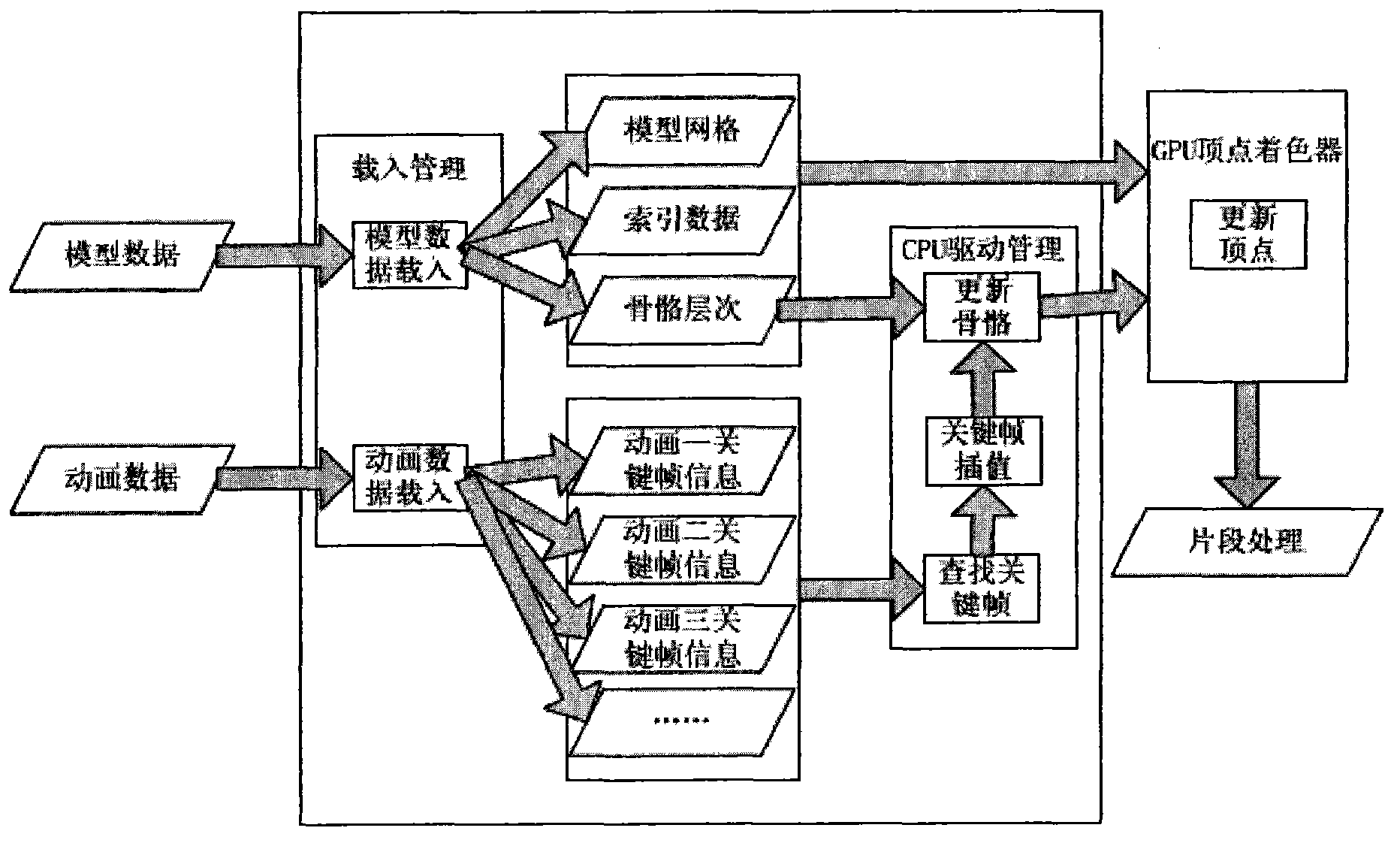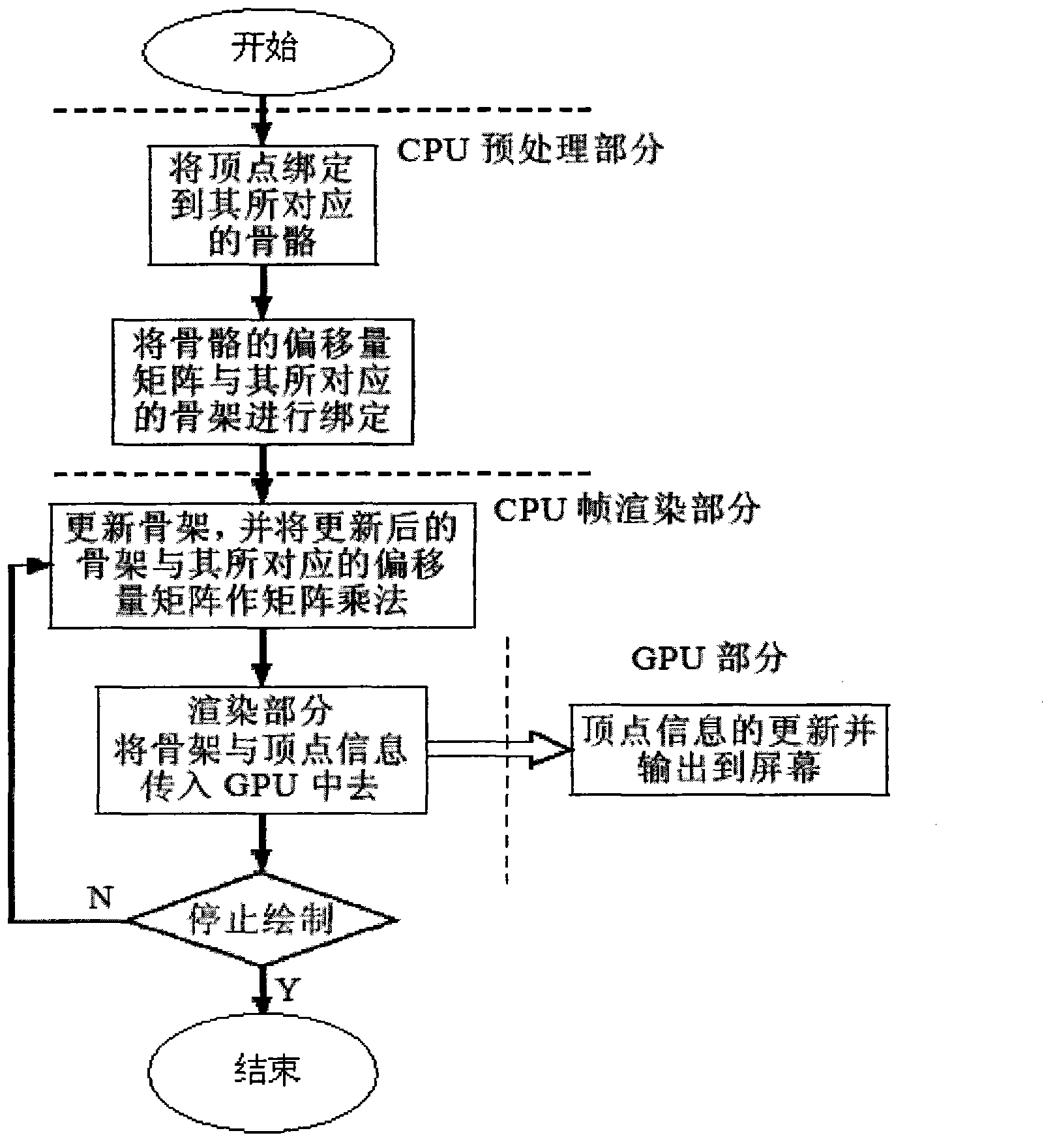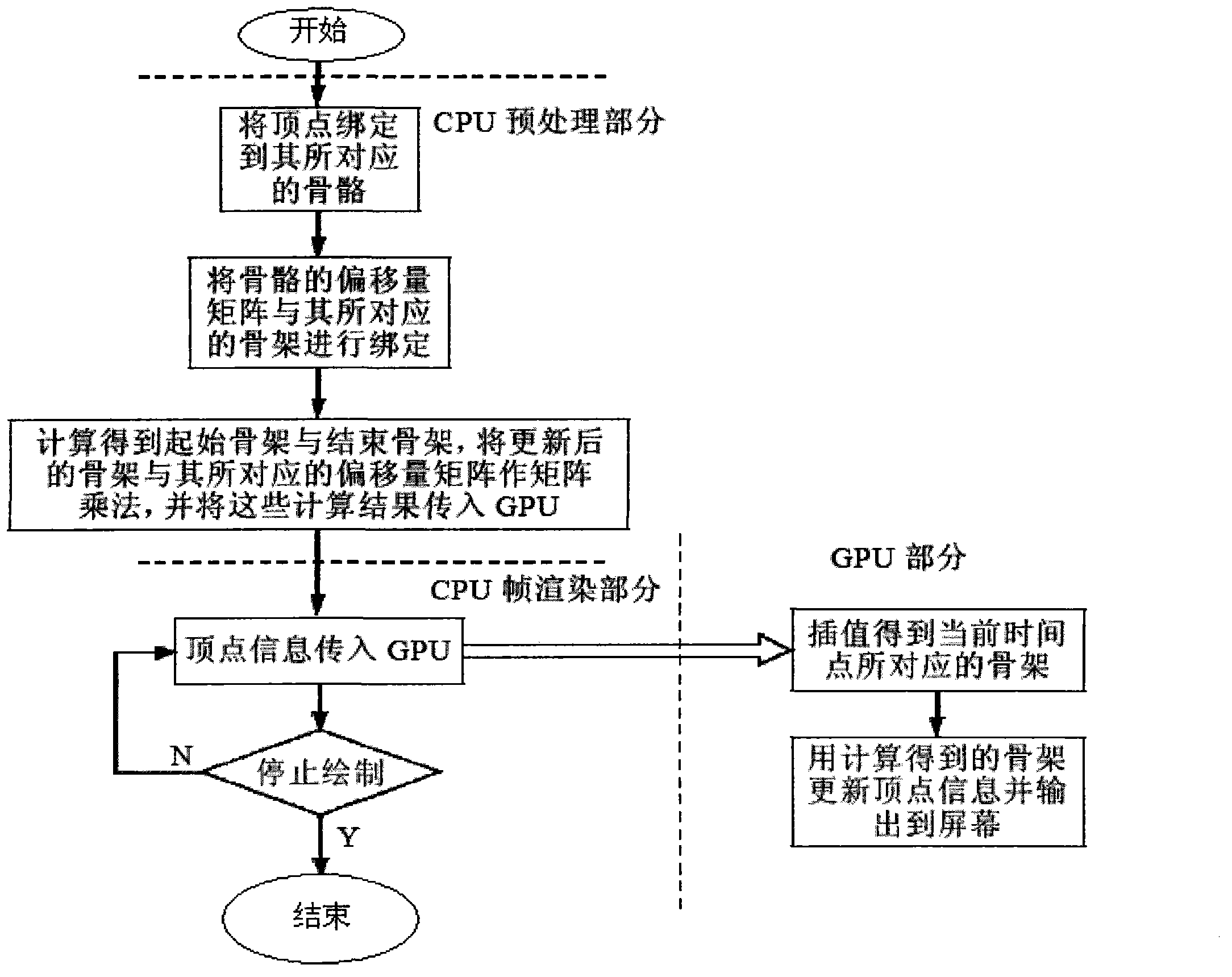Bone animation processing method based on programmable graphics processing unit (GPU)
A technology of skeletal animation and processing methods, which is applied in animation production, image data processing, instruments, etc., and can solve problems such as difficulty in realizing real-time animation and unbalanced load
- Summary
- Abstract
- Description
- Claims
- Application Information
AI Technical Summary
Problems solved by technology
Method used
Image
Examples
Embodiment 1
[0031] In this embodiment, calculations such as skeleton updating with relatively complex logic are performed on the CPU, and vertex updates with relatively simple logic are calculated on the GPU, which makes full use of the resources of the CPU and GPU. The frame diagram is as follows: figure 1 shown. However, since the bone update work is performed in the CPU, the updated matrix needs to be transferred to the GPU every time rendering.
[0032] like figure 2 As shown, the steps are as follows:
[0033] Step 1: Bind vertices to their corresponding bones in the CPU;
[0034] Step 2: Bind the offset matrix of the bone to its corresponding skeleton in the CPU;
[0035] Step 3: Update the skeleton in the CPU and perform matrix multiplication between the updated skeleton and its corresponding offset matrix, and then transfer the updated skeleton matrix and vertex information to the GPU;
[0036] Step 4: Use the incoming bone matrix to update the vertex information in the GPU. ...
Embodiment 2
[0038] This embodiment is a combination of vertex animation and skeletal animation. A set of bone matrices at the starting position and a set of bone matrices at the end position are used to represent an animation, that is, linear interpolation is performed on the starting and ending position bone matrix to obtain the intermediate animation pose. The method shown in this embodiment completes the calculation of the starting position bone matrix and the ending position bone matrix during initialization, and then puts all calculations related to skeletal animation into the GPU to complete. The advantage of the method shown in this embodiment is that the communication between the CPU and the GPU is reduced, and the disadvantage is that only the GPU is used for calculation, which wastes CPU resources and increases the burden on the GPU.
[0039] like image 3 As shown, the steps are as follows:
[0040] Step 1: Bind the vertices to the corresponding bones in the CPU;
[0041] Step ...
Embodiment 3
[0045] In this embodiment, the data texture is used as the transmission method, and the skeleton matrix is obtained by creating the skeletal animation into the texture, and then obtaining the skeleton matrix by means of texture sampling. The advantage of the method shown in this embodiment is that the communication between the CPU and the GPU is reduced, and the disadvantage is that only the GPU is used for calculation, which wastes the resources of the CPU and increases the burden of the GPU. However, data textures, as a convenient way to transfer large amounts of data, provide another way to achieve skeletal animation.
[0046] The pre-created skeletal animation method can make the skeletal animation data into a texture, or you can create a textured ResourceView to map the data to the texture. The former needs to create a texture in advance, while the latter needs to calculate the skeletal animation information and map it to the texture's ResourceView during the initializa...
PUM
 Login to View More
Login to View More Abstract
Description
Claims
Application Information
 Login to View More
Login to View More - R&D
- Intellectual Property
- Life Sciences
- Materials
- Tech Scout
- Unparalleled Data Quality
- Higher Quality Content
- 60% Fewer Hallucinations
Browse by: Latest US Patents, China's latest patents, Technical Efficacy Thesaurus, Application Domain, Technology Topic, Popular Technical Reports.
© 2025 PatSnap. All rights reserved.Legal|Privacy policy|Modern Slavery Act Transparency Statement|Sitemap|About US| Contact US: help@patsnap.com



